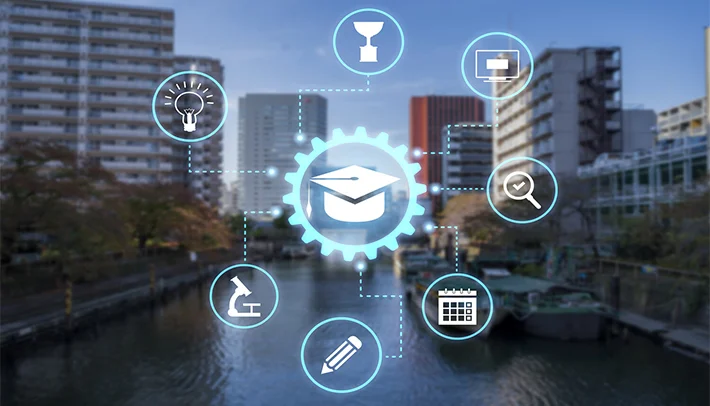The Role of Engineering Education in Driving Innovation and Sustainability

In a time when the world is facing unprecedented environmental and technological challenges, engineering education is undergoing a quiet revolution. Gone are the days when engineering was only about machines, structures, and equations. Today, it is about designing resilient cities, developing climate solutions, creating intelligent systems, and engineering sustainable futures.
Engineering colleges and universities are now shaping students not only to solve technical problems but to think critically about their impact on the world. This blog explores how engineering education is evolving to meet global challenges such as climate change, smart infrastructure, and green technology, and how students are becoming key drivers of innovation and sustainability.
Why Engineering Holds the Key to Sustainable Solutions
- Engineers are Born to Be Problem Solvers
Engineers learn to examine, refine, and construct systems that function under constraints of the real world.
With climate change, scarcity of resources, and overpopulation in cities posing threats to global stability, it is engineers who devise energy-efficient systems, green buildings, and waste-minimizing technologies.
- Technical Solutions are Needed for Global Challenges
Reducing carbon emissions to constructing resilient infrastructure against disasters, global challenges are essentially technical in origin.
Engineering education equips students with tools such as data modelling, system design, and materials science to directly impact environmental and social sustainability.
How Engineering Education is Changing
- Sustainability-Oriented Curriculum
Most engineering institutes have reorganized their curricula to encompass modules on:
- Renewable Energy Systems
- Sustainable Design and Materials
- Climate Science for Engineers
- Life Cycle Assessment and Green Manufacturing
These modules enable students to learn not only how to construct, but how to construct sustainably.
- Interdisciplinary Learning
Issues such as urban mobility or water shortage can't be addressed by a single branch of engineering.
Students today learn through interdisciplinary projects, integrating civil, mechanical, electrical, and computer science to create holistic and intelligent solutions.
Example: A smart irrigation system with IoT sensors, solar energy, and data analytics to prevent water wastage.
- Capstone Innovations and Real-World Projects
Final-year projects and competitions tend to concentrate on:
- Low-cost water purification for rural communities
- Smart traffic control systems
- Solar chargers for rural villages
These initiatives provide students with the knowledge of implementing theory to practical, significant, and scalable issues.
Aligning with Global Goals: Engineers and the SDGs
Engineering education is increasingly being matched with the United Nations Sustainable Development Goals (SDGs). Examples include:
- SDG 7 – Affordable and Clean Energy
Students engage in solar microgrids, wind power optimization, and bioenergy options.
- SDG 9 – Industry, Innovation and Infrastructure
Modules now incorporate intelligent manufacturing, robotics, and green building technologies.
- SDG 11 – Sustainable Cities and Communities
Eco-friendly architecture, public transportation design, and waste-to-energy conversion are the focus of urban planning modules.
Engineering for Climate Change and Environmental Resilience
- Renewable Energy and Green Power Systems
Electrical and mechanical engineering students are working on smarter solar inverters, more efficient wind turbine blades, and intelligent energy grids.
Laboratories are preparing students to simulate and optimize complete renewable energy systems.
- Green Materials and Circular Design
Education in material science focuses on biodegradable plastics, recycled composites, and energy-efficient insulation materials.
Biodegradable waste is reduced by training the students to reduce waste and design for repurposing, recycling, and reuse.
- Data and AI for Sustainability
Artificial intelligence and machine learning are used by computer engineering students to predict weather events, maximize energy efficiency, and engineer low-carbon systems.
Big data environmental modelling is becoming the backbone of numerous technical courses.
Constructing Smart Cities with Engineering Brains
Engineering education currently directly impacts smart city design and implementation by empowering students to work on:
- Smart grids and automated energy
- Intelligent public transit and mobility
- Smart water management and leak detection
- Segregation of waste and recycling automation
The aim is not only to digitize cities but ensure they are liveable, efficient, and eco-friendly.
Creating the Next Generation of Green Innovators
- Incubation and Innovation Centres
Several colleges have campus-based innovation centres and startup incubators that assist student projects with social and environmental applications.
Students convert their capstone concepts into prototypes, obtain patents, and even start green-tech companies.
- Industry and Research Partnerships
Colleges are collaborating with businesses and research institutions to offer students real-world experience.
Internships, sponsored labs, and collaborative R&D provide students with a direct line from the classroom to climate action.
- International Exposure and Competitions
They engage in international sustainability competitions such as:
- Shell Eco-Marathon
- Solar Decathlon
- ASME and IEEE innovation contests
These platforms give them an exposure of their talent on an international platform and expose them to the newest developments in green engineering.
Conclusion: Engineering for a Better Tomorrow
Engineering education is no longer solely about resolving merely technical equations. It's about resolving the world's most complex problems with technical proficiency, human compassion, and global accountability.
As the climate emergency worsens and cities grow more intricate, engineers need to emerge not only as constructors, but as change-makers, environmental guardians, and innovators.
And today's classrooms are the launching pads.
The revolution is clear: the future of engineering is not merely about efficiency — it's about influence.